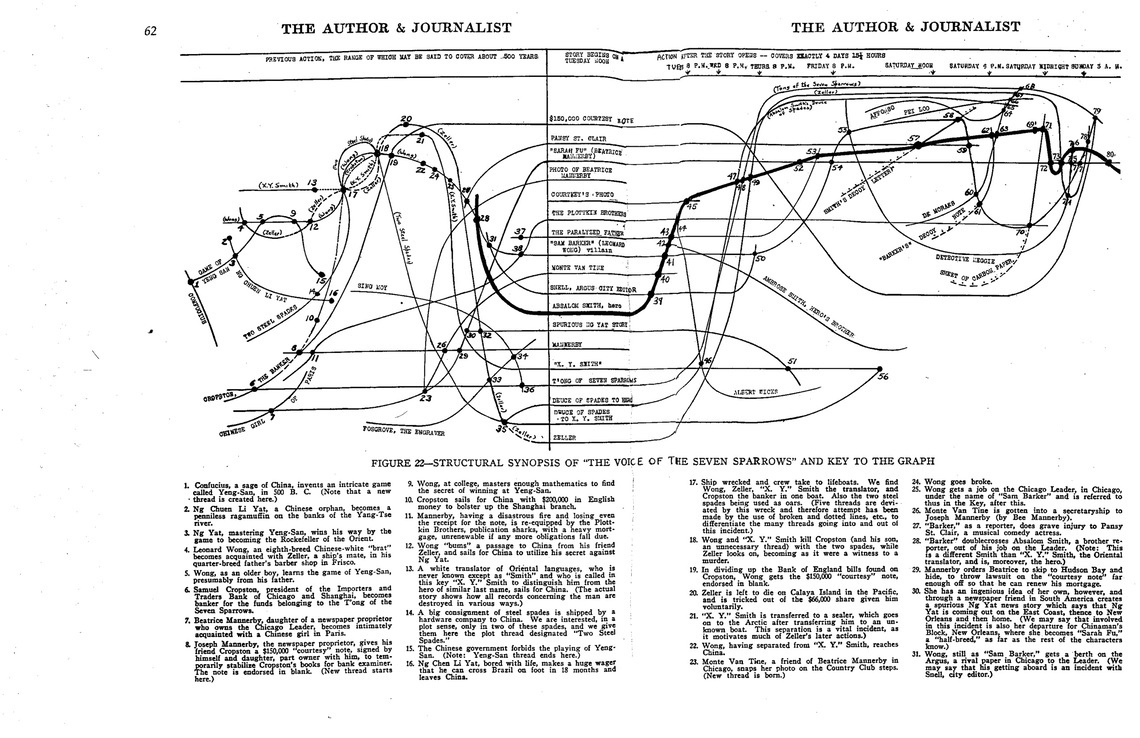"The Mechanics (and Kinematics) of Web Work Plot Construction", Diagram of The Voice of the Seven Sparrows
-
One of the preeminent designers of story visualizations was Harry Stephen Keeler, who in 1928 began writing an eight-part treatise on the diagramming method he called “Web-Work.” Keeler was a prolific writer of pulp fiction, and he was particularly known for writing stories with convoluted plots ending in surprising twists that suddenly illuminated previously obscure character interactions. In “Web-Work,” Keeler laid out his method for devising these complicated plots, which depended on drawing intricate diagrams. The series was published in Author and Journalist, a journal edited by Willard Hawkins, who had collaborated with Keeler on similar articles about plot visualizations. Over the series, Keeler offers different diagrams for specific narrative types. The series culminates with a visualization of Keeler’s own novel, The Voices of the Seven Sparrows (1928), which shows linkages between plot points, character interactions, as well as the significant plotlines that are implied by the narrative itself to have preceded the novel’s starting point. The intricate web of interweaving characters, objects, and plots is Keeler’s point: such a diagram, though disorienting at first, reveals the necessarily complex relationships and incidents that make up a compelling story.
Introduction
- Label
- "The Mechanics (and Kinematics) of Web Work Plot Construction", Diagram of The Voice of the Seven Sparrows
- Author
- Harry Stephen Keeler
- Original Publication Date
- 1928
- New Publication Date
- 1928
- Publisher
- The Author and Journalist, October 1928
- Location
- RBML
- Case
- 5
